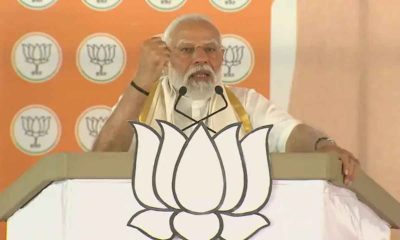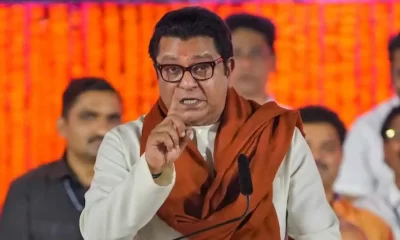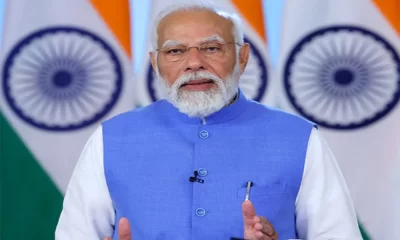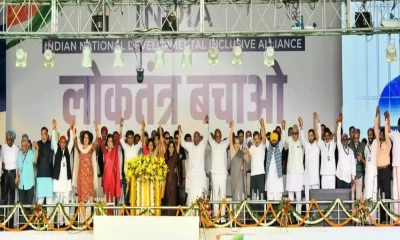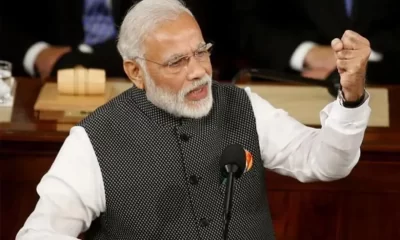Latest business news
Employment situation grim, says CMIE; Rural wages drop, says RBI report
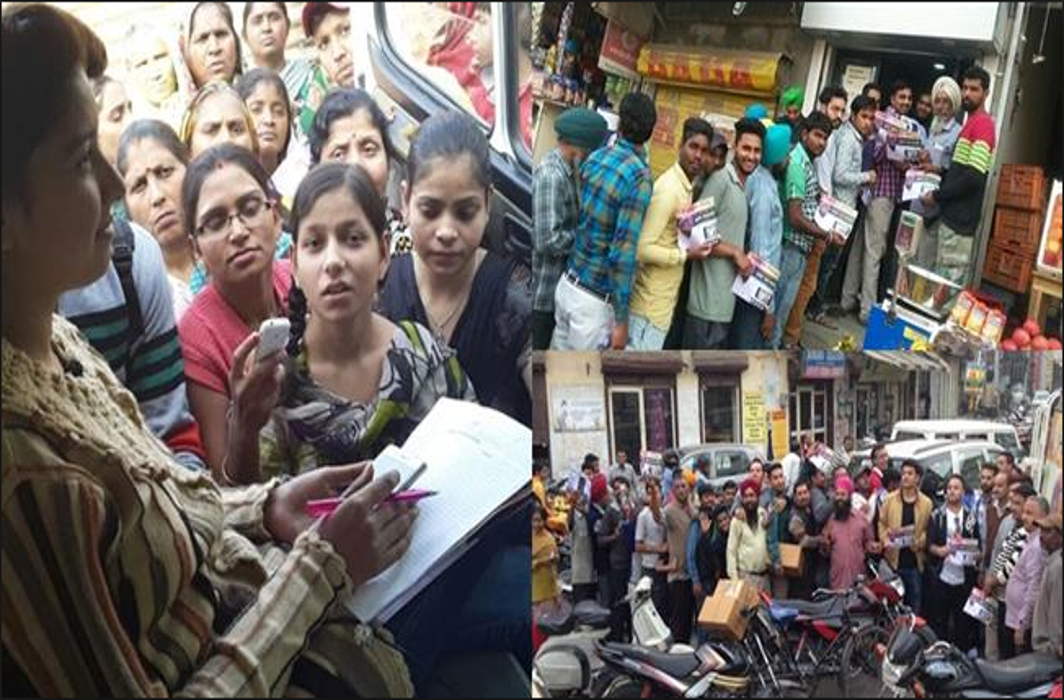
Labour participation and employment rates in India are around their lowest levels, says a report of Centre for Monitoring Indian Economy (CMIE) which produces economic and business databases.
And, while employment is at its lowest, rural wages have reduced dramatically since 2014 under Narendra Modi government, making it a period of distress according to the Reserve Bank of India (RBI).
According to an article by Mahesh Vyas on CMIE website, the employment situation continues to remain grim in the country.
According to CMIE, the unemployment rate continues to remain high compared to the levels a year ago when they ranged closer to 4 per cent although it fell slightly to 5.9 per cent in April 2018 compared to the over 6 per cent rate seen in the preceding two months.
April began with rising unemployment rates of over 7 per cent, but then the rates moved decidedly lower in the second half of the month.
Labour participation rate (LPR) declined in April 2018. At 43.1 per cent the LPR in April was among the lowest. In the past 28 months, (since the CMIE started measuring LPR), this was the second-lowest LPR level.
“The low LPR and high unemployment rate combine to give us a low employment rate in April 2018. The employment rate was 40.7 per cent during the month. This is a small improvement over the 40.5 per cent level of March 2018. But, March and April this year mark the lowest employment rates recorded since January 2016 when we began these measurements,” said Vyas.
Here are some points he makes:
– The estimated employed persons in the country was 403.2 million and the unemployed who were actively looking for a job during the month was 25.1 million.
– An additional 9.5 million were unemployed and willing to work but were not actively looking for a job.
– The total workforce willing to work and was waiting for jobs to become available therefore was of the order of 35 million.
– Large numbers of labour force quit the labour markets post demonetisation and have not returned to the labour markets. It is likely that when conditions improve these could come back. If we add these, then the workforce that is willing to work but does not have a job is much larger.
Vyas describes the current situation, particularly in urban India, as “sombre”.
Noting that the number of applicants for a single job often runs into several thousands, Vyas says: “Although the overall unemployment rate fell in April, it rose in urban India – from 6.5 per cent in March to 6.6 per cent in April. Labour participation rate fell from 41.1 per cent to 40.8 per cent. And, the employment rate fell to its lowest level of 38.1 per cent.”
The employment rate had touched a new low of 38.4 per cent in March 2018 itself. However, in April, it fell further to 38.1 per cent.
The working age Vyas takes into consideration are all persons above the age of 15 years. In September 2016, over 41 per cent of such people were working.
Employment in urban India fell to an 11-month low in April 2018.
However, says Vyas, the month’s data also seems to suggest a pause in the growing employment in urban India seen in the preceding six months. This rising employment had stabilised the employment rate at around 40 per cent after seeing a fall in the preceding months.
At the same time, a RBI report released last week (April 25) talked of a sharp decline in rural wages since 2014. “During the last 10 year period, a high growth phase in rural wages from 2007-08 to 2012-13 was followed by a phase of significant deceleration,” the RBI report said.
Between October 2007 and October 2013, the report noted, wages in the agricultural and non-agricultural sectors grew at 17% and 15%, respectively. Since November 2014, however, agricultural and non-agricultural sector wages grew at only 5.6% and 6.5%, respectively.
The first phase spanned from January 2002 to September 2007, when the average growth in rural nominal wages remained around 4 per cent, while the average rural inflation stayed around 4.5 per cent. As a result, there were extended spells when growth in real wages stayed in the negative territory. This period has been analysed quite extensively in the literature. Several authors have also termed this phase as the period of agrarian distress, a lot of which was attributed to poor agricultural performance and lower employment opportunities outside agriculture (Himanshu, 2006; Abraham, 2009).
Phase II (Oct 2007-Oct 2013)
This phase covers the period from October 2007 to October 2013. During this phase, the average growth in nominal agricultural and non-agricultural wages stood at around 17 per cent and 15 per cent, respectively, surpassing rural inflation which averaged at around 10 per cent. Evidently, there were several months when growth in real wages reached such levels that were not a regular phenomenon, at least never observed in the preceding decade.
Phase III (Nov 2014- Oct 2017)
This is the current phase which began from November 2014. Notwithstanding data limitations (as mentioned in section III) one cannot ignore the fact that rural wage growth has recorded significant deceleration during this phase. This phase is also characterized by low inflation occasionally surpassing growth in nominal rural wages, pushing real wage growth to the negative territory. For obvious reasons, such movements in rural wages after a prolonged period of boom has attracted the attention of policy research. Again, this phase has been labelled as a period of rural distress. However, if we consider average growth in rural wages and inflation, we do not find a significant gap between the two. Average rural inflation during phase III so far is around 4.0 per cent, whereas average growth rates in nominal agricultural and non-agricultural wages are 5.6 per cent and 6.5 per cent, respectively.
A whole host of factors including the global slowdown in growth, collapse of international primary commodity prices, and major contraction in food prices led to the decline in growth of rural wages, according to the RBI report.
The Indian economy also suffered two consecutive droughts in financial years 2015 and 2016, which wreaked havoc in rural India, said a report in Quartz India.
The ineffective implementation of the Mahatma Gandhi National Rural Employment Generation Scheme (MGNREGS) in recent years has also contributed to the decline in farm income, the Quartz report said, on basis of RBI report.
Moreover, growth in the construction sector, which saw a significant pick up during 2000 and 2012 and was the major driver of rural non-farm employment, slowed down in recent years.
Latest business news
Google restores delisted Indian apps after government intervention
Google on Saturday restored all Indian apps it had removed.

Google has started to restore all the delisted Indian mobile apps on Play Store agian, which they had removed due to a disagreement over service fees. After a discussion between company representatives and IT Minister Ashwini Vaishnaw, the decision was made, according to sources.
The step was taken in response to Vaishnaw’s strong statement in which he said that it is not allowed for apps to be removed from the Google Play Store. The minister had said, India is very clear, our policy is very clear…our startups will get the protection that they need.
Vaishnaw continued saying that he has already given Google a call. They will be speaking with the app developers who were delisted this week. This is not acceptable. The minister said this kind of delisting cannot be permitted.
Ten Indian companies’ apps were banned by Google on Friday, causing outrage in one of its fastest-growing markets. With 94% of phones running on its Android platform, Google holds a large portion of the Indian market. Popular names like Naukri and Bharatmatrimony were on the list.
The main point of contention is Google’s in-app purchase fees, which range from 11% to 26%. Indian startups have long opposed the US tech giant’s actions, believing them to be unfair.
The founder of Bharat Matrimony, Christian Matrimony, Muslim Matrimony, and Jodii, Matrimony.com, expressed shock at the matchmaking apps’ removal from the Google Play Store.
Shaadi. Com CEO Anupam Mittal described it as a dark day for India’s internet, highlighting the possible broad effects on matchmaking services. He also called Google an evil.
While, Kuku FM Co-founder Vinod Kumar Meena in a statement had said that Google was behaving like a monopoly.
Meanwhile, Google temporarily withdrew the famous Indian payments app Paytm from the Play Store in 2020, claiming a few policy infractions. Due to this decision, the founder of the company as well as the larger startup community came together to build their own app stores and file lawsuits against Google.
Latest business news
Anant Ambani says he is 100% lucky to get Radhika Merchant in his life
Anant Ambani said he was grateful to get Radhika as his life partner. He said he is 100% lucky to get Radhika Merchant in his life. He said every day he is falling more and more in love with her. He added although he had known Radhika for the last 7 years, it felt he had met her only yesterday. He thanked Radhika for everything.

Anant Ambani and Radhika Merchant’s grand three-day wedding celebrations began with a glamorous cocktail night on Friday in Jamnagar. During the celebrations, Anant Ambani also gave a speech wherein he thanked his late grandfather Dhirubhai Ambani and grandmother Kokilaben Ambani for inspiring him. Anant Ambani said he was grateful to get Radhika as his life partner. He said he is 100% lucky to get Radhika Merchant in his life. He said every day he is falling more and more in love with her.
He expressed his gratitude to his mother for pulling together the lavish three-day wedding celebrations in Jamnagar. Anant thanked his mother for all she had done. He said all the arrangements had been done by his mother and nobody else. He added his mother had gone all out and she had worked 18-19 hours a day and he was extremely grateful to her.
He also thanked all the guests who were present there at the pre-wedding celebrations. He said everyone had made it to Jamnagar to make him and Radhika feel special. He said both of them were honored and humbled to have all of them present there. Anant said he was sorry if they had caused an inconvenience to anyone. He asked for forgiveness. He hoped everyone is going to enjoy the coming three days. He also thanked his mother, father, sister, brother, his sister-law and his brother in-law for making this event memorable.
Anant said everyone has been sleeping for less than 3 hours a day for the last 2-3 months and he was very happy to share this joy with everyone. The youngest Ambani talked about his personal struggles and how his parents had always supported him. He further added his life had not been entirely a bed of roses. He said he had also experienced the pain of thorns. He said he had faced many health crises.
Latest business news
Facebook chief Mark Zuckerberg shares pictures from 2nd day of Anant Ambani and Radhika Merchant pre-wedding celebrations
Zuckerberg shared pictures from the 2nd day of Anant Ambani and Radhika Merchant’s pre-wedding celebrations. In the photograph Mark Zuckerberg can be seen along with his wife Priscilla Chan. The couple is exuding happiness as they prepare for the event. He captioned the picture it is getting wild out here.

Facebook boss Mark Zuckerberg and wife Priscilla Chan joined the star- studded pre-wedding celebrations of Anant Ambani and Radhika Merchant in Jamnagar on Friday. The event was attended by many prominent figures from different fields. Zuckerberg took to his Instagram handle congratulated the couple and said he loved Indian weddings.
Zuckerberg shared pictures from the 2nd day of Anant Ambani and Radhika Merchant’s pre-wedding celebrations. In the photograph Mark Zuckerberg can be seen along with his wife Priscilla Chan. The couple is exuding happiness as they prepare for the event. He captioned the picture it is getting wild out here.
The theme of the opening day of the pre-wedding celebrations was Evening in Everland as the guests wore cocktail attire. The first day of the grand celebrations elevated the expectations of the guests for the following days. The theme of the 2nd day of the pre-wedding bash is known as a Walk on the Wildside and the guests can be seen in Jungle Fever attire.
Zuckerberg has opted for an animal print shirt with white trousers, Chan is complementing his look in a strappy one piece in black and golden. The Jungle theme is aligned to Vantara, Reliance’s animal welfare initiative undertaken and launched by Anant Ambani a few days back.
International pop star Rihana electrified the pre wedding celebrations on Friday with an amazing performance, marking her debut appearance in India. The chart topping artist engaged the audience with performances of her iconic hits which included Pour it Up, Work and Diamonds.
Zuckerberg graced the opening day, wearing a black-on-black firefly blazer and shoes from Alexander McQueen while his wife Priscilla wore a black gown with gold flower details and other accessories such as dainty chain bracelet, gold necklace and stud earrings. Mark Zuckerberg and wife Priscilla Chan are one of the Power couples invited from the global business community for the festivities currently underway at Jamnagar.
-
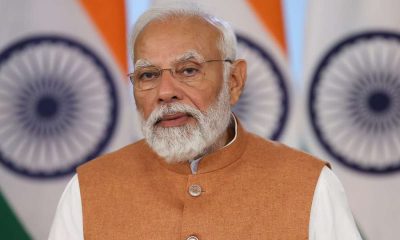
 2024 Lok Sabha Elections20 hours ago
2024 Lok Sabha Elections20 hours agoPM Modi calls for high voter turnout in second phase of Lok Sabha elections 2024, says your vote is your voice
-
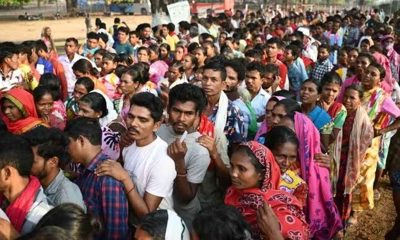
 2024 Lok Sabha Elections14 hours ago
2024 Lok Sabha Elections14 hours agoLok Sabha election 2024: Nearly 50% voter turnout recorded in second phase till 3 pm
-

 India News19 hours ago
India News19 hours agoSalman Khan house firing case: NIA interrogates arrested shooters Sagar Pal, Vicky Gupta for three hours
-
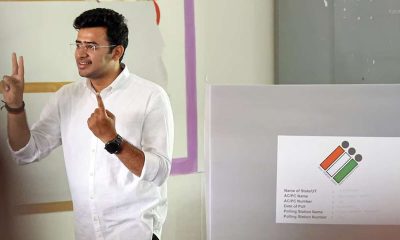
 2024 Lok Sabha Elections13 hours ago
2024 Lok Sabha Elections13 hours agoElection Commission books BJP MP Tejasvi Surya for seeking votes in the name of religion
-
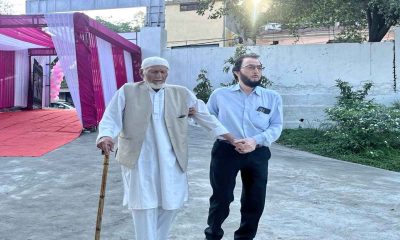
 2024 Lok Sabha Elections17 hours ago
2024 Lok Sabha Elections17 hours agoLok Sabha elections 2024: 102-year-old man walks to polling booth to cast his vote in Jammu


